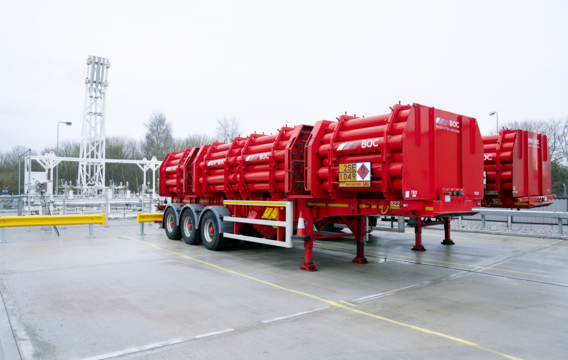- Official BOC UK Online | Industrial Gases | Products & Solutions | BOConline UK
-
Shop
- Industries
- Processes
- Gases & Equipment
-
Solutions
-
Services
-
Health & Safety
-
Contact & Support
- What's Happening
-
Net Zero Strategies
Industrial Decarbonisation: Made in the UK by Hydrogen
Posted by BOC

Authored by Brian Pickering, Head of Bulk Sales Applications and Business Development, BOC UK & Ireland
In the UK, it is widely recognised that heavy industry is a significant emitter given its reliance on fossil fuels for high-temperature processes and as a feedstock. The making of steel, glass, cement, and the likes accounts for 16% of the country’s annual greenhouse gas emissions – making it the third highest emitting sector.
Commercially, now more than ever, the case for industrial decarbonisation has strengthened. Large emitters are finding that their compliance costs are dramatically increasing, with no end in sight. At the close of 2023, the UK Government announced the expansion of the Carbon Border Adjustment Mechanism (CBAM), to ensure highly traded, carbon intensive products from overseas in the iron, steel, aluminium, fertiliser, hydrogen, ceramics, glass and cement sectors face a comparable carbon price to those produced domestically. In essence, the cost of emissions from coal, oil and gas will only increase from now on, increasing the incentive to move to a fuel for net zero. And despite possible initial concerns around the upfront cost of implementing the necessary changes required to decarbonise, industry simply will no longer be able to afford inaction.
Innovation in decarbonising technologies for hard-to-abate industrial processes will be critical if the world is to reach Net Zero, and if individual companies are to reduce the costs of carbon emissions. There are both long term solutions with hydrogen fuel switching, as well as short term, complementary, low-risk strategies utilising oxygen to optimise processes and increase fuel efficiency.
Hydrogen represents one of the most viable solutions to decarbonising many of the hard-to-abate industrial processes that are facing numerous technical and commercial barriers, such as steelmaking and cement production. Unlike fossil fuels, when hydrogen is burned to create heat, it only releases water. It also provides the highest amount of energy per kg vs alternative fuels.
But while these pilot demonstrations run, and hydrogen capacity increases to meet demand and target, there is a role that oxygen can play in the immediate term as to mitigate carbon compliance costs. The industrial use of oxygen can be a low-risk strategy, and our recommended first step towards reducing carbon emissions. The industrial use of oxygen in high temperature manufacturing process increases fuel efficiency, which in turn reduces carbon emissions. While complying with environmental standards, the use of oxygen has numerous financial benefits as well – it reduces the amount of natural gas needed, reduces carbon emissions and the associated costs thereof, and lastly it has a positive effect on furnace refractory life and furnace aging characteristics.
Amidst a myriad of driving factors, it is evident that industry can no longer ignore the compelling financial incentives for decarbonisation. Net Zero strategies are complex, especially for hard-to-abate industrial sectors that traditionally rely on high-carbon processes. Here, hydrogen (and oxygen in the shorter term) has the potential to act as a cornerstone for decarbonisation, and in line with the great success of IFS Phase 1, this cannot be underestimated.



